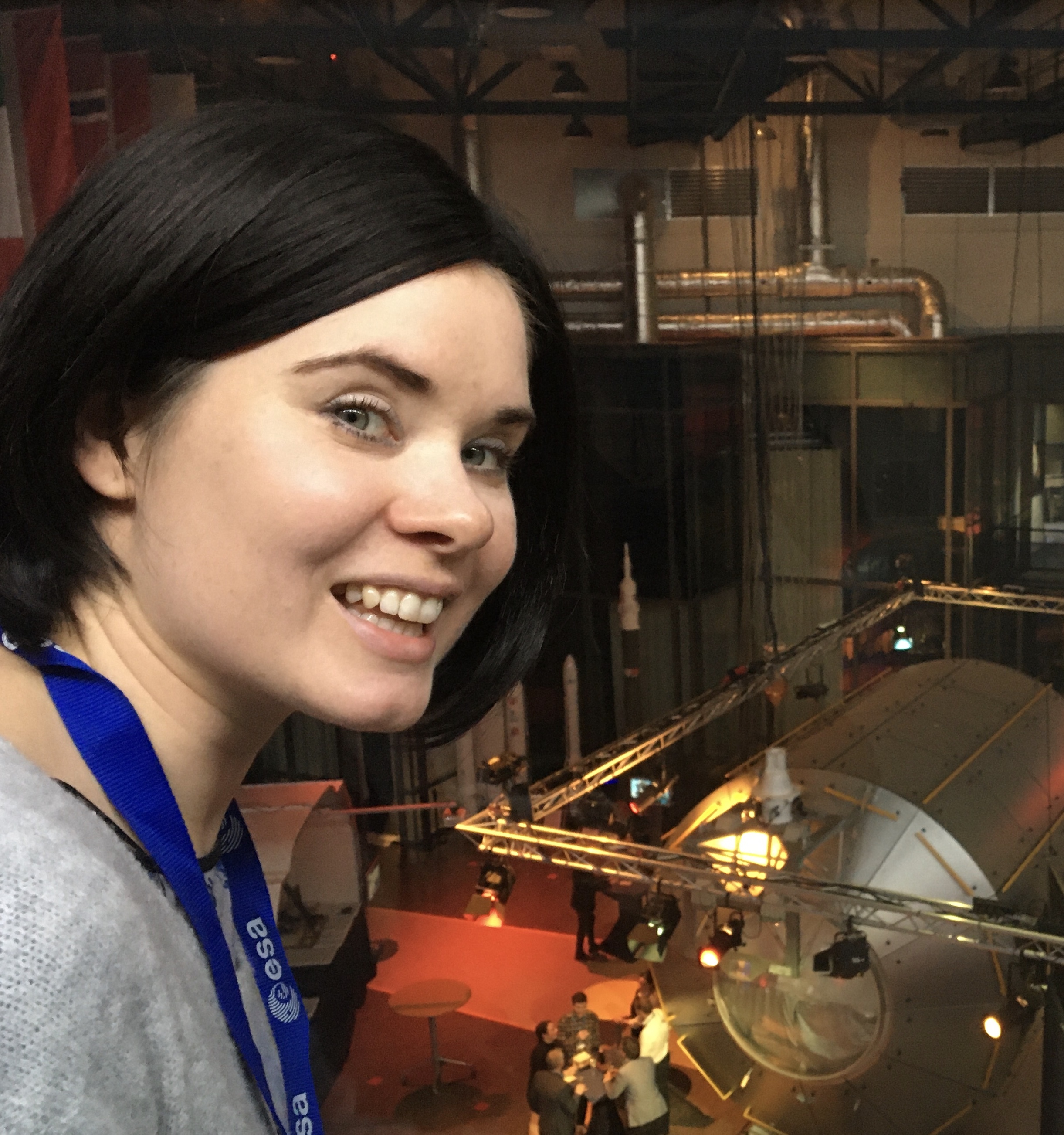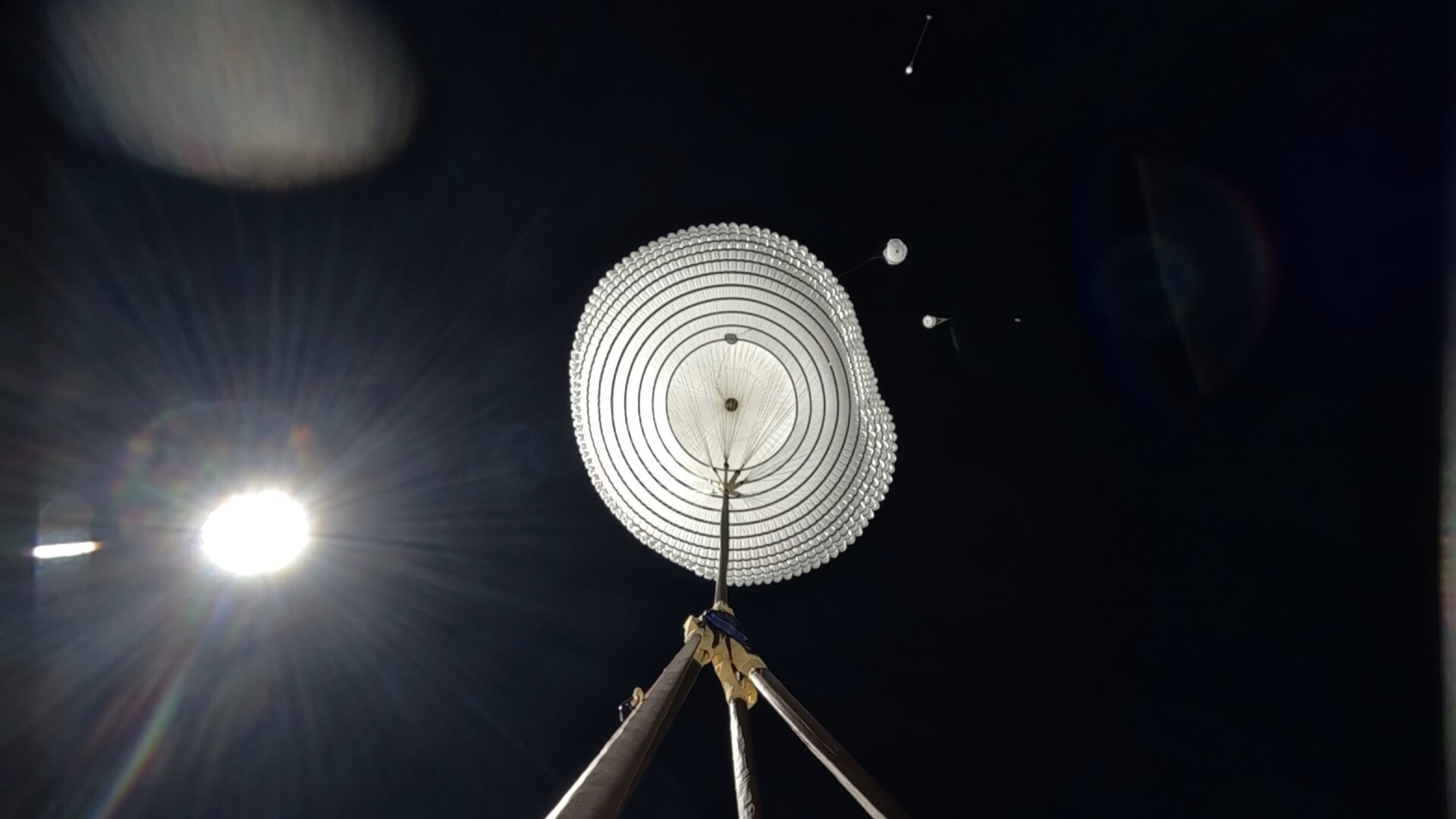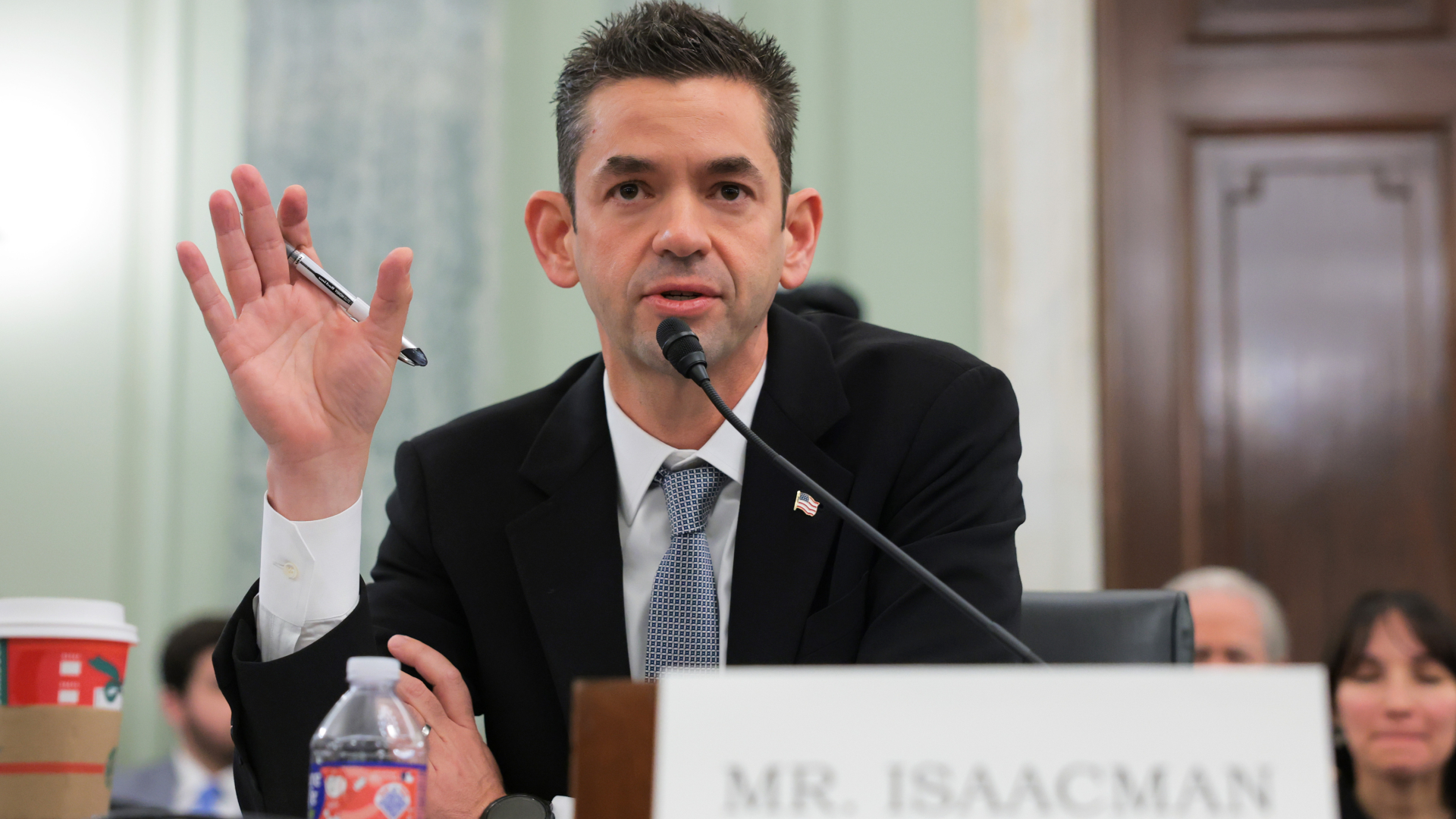Europe tests largest-ever Mars parachute in the stratosphere above the Arctic (video)
"We are happy to confirm that we have a parachute design that can work on Mars — an ambitious system with the largest parachute ever to be flown outside Earth"
A giant parachute built for Europe's beleaguered ExoMars mission has aced a drop test with a mock lander during a test campaign in the Arctic.
The double parachute system consists of a 50-foot-wide (15-meter) first-stage chute and a secondary 118-foot-wide (35m) chute, which is, according to ESA, the largest ever designed to land an object on Mars.
If all goes well, it will lower the 683-pound (310-kilogram) Rosalind Franklin rover to the surface of the red planet in 2028, so that it can commence its delayed search for traces of Martian life.
The parachute system had had a complicated journey with many test failures but was deemed ready for the planned launch in 2022 before the mission was suspended after Russia invaded Ukraine. Since Europe withdrew from its collaboration with Russia, who had provided the landing platform and a few other bits of technology for the mission, the parachute has been stored waiting for a new landing platform to be built in Europe.
"We are running this campaign to confirm our readiness for Mars, and to verify that the parachutes are still performing as expected after the long storage," Luca Ferracina, ESA's ExoMars Entry Descent and Landing Module system engineer, said in a statement.
That's good news for the mission, which has been in limbo since the Trump administration's draft NASA budget was released in May. NASA committed to provide a few hundred million dollars to help ESA get ExoMars off the ground in 2028, but the Trump budget culled that funding as part of its widespread science mission cuts. But the U.S. Senate's Appropriations Committee rejected those cuts in its report published on Friday, July 18, suggesting that Trump's budget may not find support among legislators.
ESA is surely following the discussions closely as NASA's withdrawal would likely cause further delays to the heavily delayed mission.
Breaking space news, the latest updates on rocket launches, skywatching events and more!
Earlier this year, ESA signed a $194 million contract with the European aerospace giant Airbus to build the new landing platform. During the parachute tests, its mock-up descended to the ground at Sweden's Esrange Space Center in Kiruna from the altitude of 18.6 miles (30 kilometers) after having been dropped from a high-altitude balloon. The capsule, according to ESA, experienced about 20 seconds of free fall before the first of the parachutes unfurled.
Although the atmosphere of Mars has only about 1% of the density of Earth's atmosphere, the engineers fine tuned the test to recreate the forces the landing assembly will experience on Mars.
"The combination of velocity and low atmospheric density in this test is exactly the same as what the parachutes will experience on Mars," Ferracina said.
During the Mars landing, the capsule will hit the red planet's tenuous atmosphere at a mind-boggling speed of 13,050 mph (21,000 km/h) but will slow down to about 1,000 miles per hour from natural drag before the first parachute opens. During the tests, the mock-up capsule reached about that speed after its short freefall through the thin stratospheric air.
"We are happy to confirm that we have a parachute design that can work on Mars — an ambitious system with the largest parachute ever to be flown outside Earth," Ferracina said.

Tereza is a London-based science and technology journalist, aspiring fiction writer and amateur gymnast. Originally from Prague, the Czech Republic, she spent the first seven years of her career working as a reporter, script-writer and presenter for various TV programmes of the Czech Public Service Television. She later took a career break to pursue further education and added a Master's in Science from the International Space University, France, to her Bachelor's in Journalism and Master's in Cultural Anthropology from Prague's Charles University. She worked as a reporter at the Engineering and Technology magazine, freelanced for a range of publications including Live Science, Space.com, Professional Engineering, Via Satellite and Space News and served as a maternity cover science editor at the European Space Agency.
You must confirm your public display name before commenting
Please logout and then login again, you will then be prompted to enter your display name.

